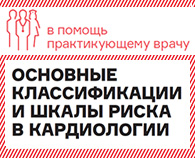High pulse pressure associated with adverse CV outcomes
High pulse pressure confers elevated risk for adverse CV outcomes and enables refinement of prognostication beyond mean arterial pressure, according to new data from the REACH registry.
Researchers assessed whether pulse pressure, defined as the difference between systolic BP and diastolic BP, had any effect on CV outcomes in a broad international population. They analyzed 45,087 participants from the REACH registry (mean age, 68 years; 35% women) with clinical atherothrombotic disease or risk factors for it.
They assessed the effect of pulse pressure on the following outcomes: CV death, nonfatal MI, nonfatal stroke, all MI, all stroke, CV hospitalization and CV death/MI/stroke/hospitalization. Participants were stratified into four quartiles based on pulse pressure and followed for 4 years.
Among the study population, mean systolic BP was 138 mm Hg, mean diastolic BP was 79 mm Hg and mean pulse pressure was 49 mm Hg,Senthil Selvaraj, MD, MA, from Brigham and Women’s Hospital Heart and Vascular Center and Harvard Medical School, and colleagues wrote.
Higher pressure, worse outcomes
In a univariate analysis, the higher the quartile of pulse pressure, the worse the results for all outcomes (P < .05 for all), Selvaraj and colleagues wrote.
After adjustment for age, sex, current smoking status,hypercholesterolemia, diabetes, use of aspirin, use of statins, use of BP medications and mean arterial pressure, the highest quartile of pulse pressure was associated with increased risk for the following outcomes compared with the lowest quartile:
· nonfatal MI (HR = 1.3; 95% CI, 1.1-1.5);
· all MI (HR = 1.1; 95% CI, 1-1.3);
· nonfatal stroke (HR = 1.2; 95% CI, 1-1.3);
· CV hospitalization (HR = 1.1; 95% CI, 1.1-1.2); and
· CV death/MI/stroke/hospitalization (HR = 1.1; 95% CI, 1-1.1).
Elevated pulse pressure was not associated with increased risk for CV death (HR = 0.8; 95% CI, 0.7-0.9) or all stroke (HR = 1.1; 95% CI, 0.9-1.2), the researchers found.
After adjustment for mean arterial pressure to determine whether pulse pressure adds clinically useful information, the researchers found that the relationship between high pulse pressure and adverse events remained for nonfatal MI, all MI, CV hospitalization and CV death/MI/stroke/hospitalization (P < .01 for all).
“Our study is among the largest international studies of [pulse pressure] and adds further support to the prognostic utility of [pulse pressure],” Selvaraj and colleagues wrote.
Errors may limit impact
In a related editorial, Stanley S. Franklin, MD, and Nathan D. Wong, PhD, wrote that limitations of the study include that conventional clinic and office BP are often wrong, which can produce falsely widened or narrowed pulse pressure; and that “considering [pulse pressure] in isolation can result in errors of treatment” because it “does not clarify which physiologic component of elevated BP is contributing to CVD risk.”
Franklin and Wong, both from the Heart Disease Prevention Program, division of cardiology, University of California – Irvine, concluded that “in future hypertension guideline development, there should be continued discussion of the potential role of [pulse pressure] in further risk stratification beyond traditional staging based on [systolic BP] and [diastolic BP].” – by Erik Swain
Source: www.healio.com






